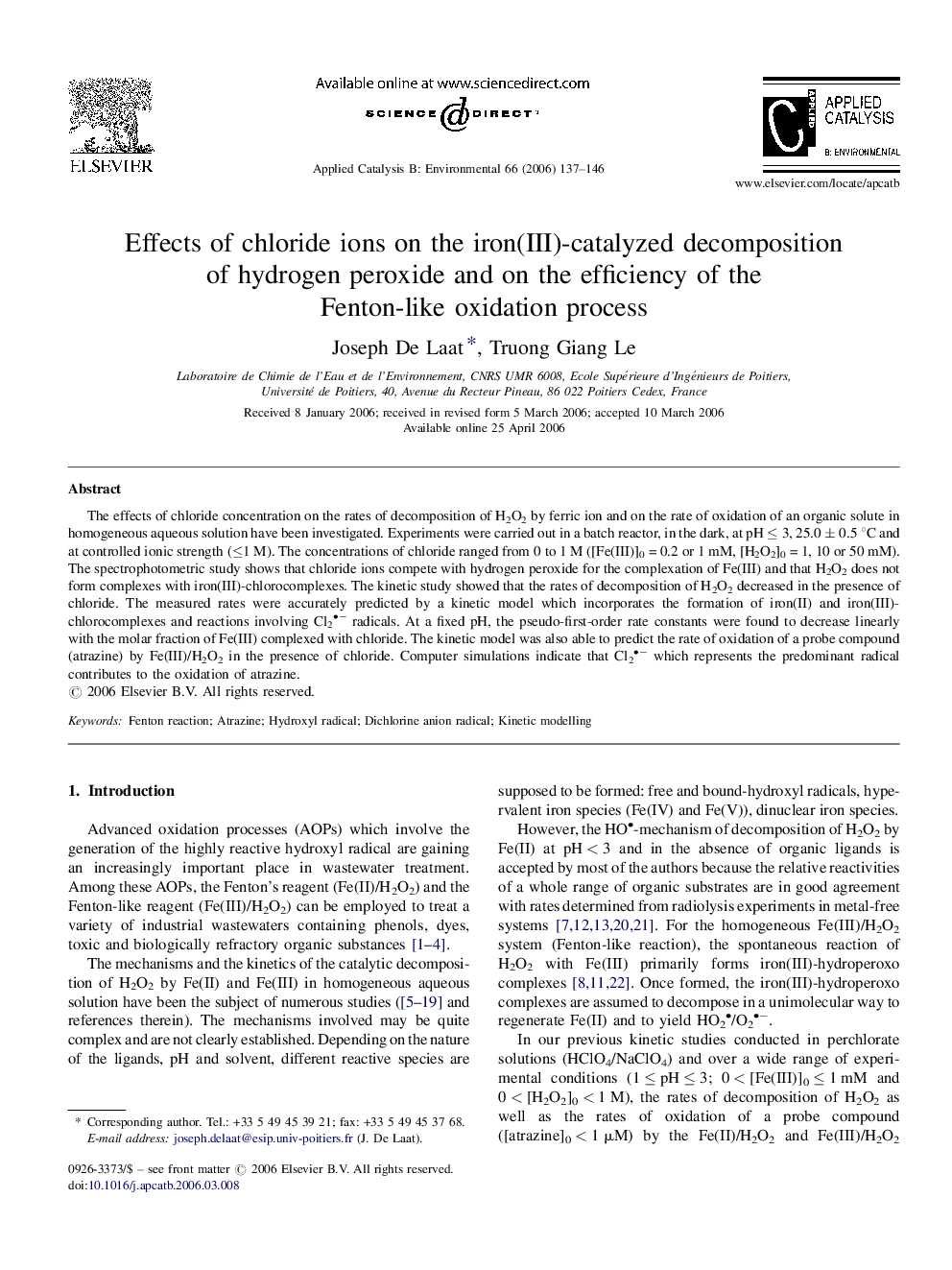| Article ID | Journal | Published Year | Pages | File Type |
|---|---|---|---|---|
| 49155 | Applied Catalysis B: Environmental | 2006 | 10 Pages |
The effects of chloride concentration on the rates of decomposition of H2O2 by ferric ion and on the rate of oxidation of an organic solute in homogeneous aqueous solution have been investigated. Experiments were carried out in a batch reactor, in the dark, at pH ≤ 3, 25.0 ± 0.5 °C and at controlled ionic strength (≤1 M). The concentrations of chloride ranged from 0 to 1 M ([Fe(III)]0 = 0.2 or 1 mM, [H2O2]0 = 1, 10 or 50 mM). The spectrophotometric study shows that chloride ions compete with hydrogen peroxide for the complexation of Fe(III) and that H2O2 does not form complexes with iron(III)-chlorocomplexes. The kinetic study showed that the rates of decomposition of H2O2 decreased in the presence of chloride. The measured rates were accurately predicted by a kinetic model which incorporates the formation of iron(II) and iron(III)-chlorocomplexes and reactions involving Cl2− radicals. At a fixed pH, the pseudo-first-order rate constants were found to decrease linearly with the molar fraction of Fe(III) complexed with chloride. The kinetic model was also able to predict the rate of oxidation of a probe compound (atrazine) by Fe(III)/H2O2 in the presence of chloride. Computer simulations indicate that Cl2− which represents the predominant radical contributes to the oxidation of atrazine.
